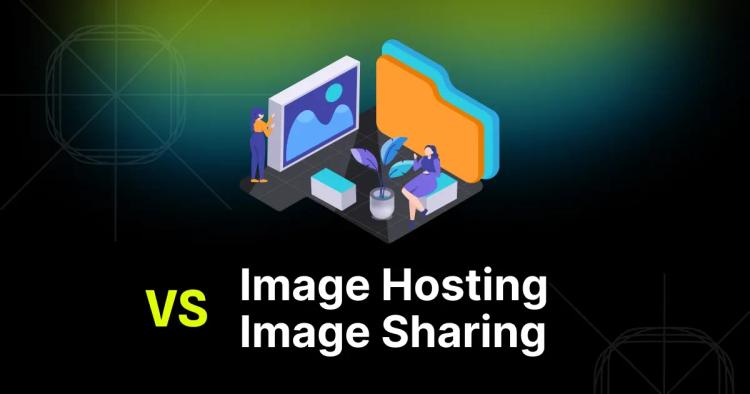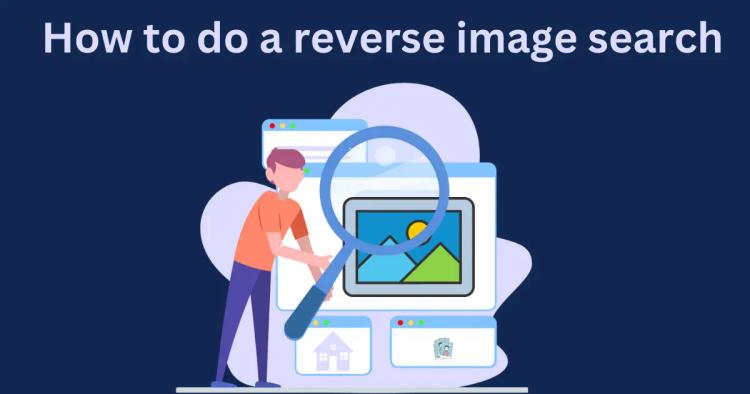In the ever-evolving landscape of digital tools, the reverse image search emerges not just as a utility but as a versatile gem, often under appreciated for its multifaceted capabilities. Beyond its fundamental purpose of image identification, this tool unveils a myriad of creative applications.
Join us as we embark on a journey into ten innovative uses that transcend the conventional, adding an artistic flair, a touch of nature, a historical dimension, and much more to this seemingly straightforward technology.
1. Discovering Art and Design Inspiration
In the intricate dance of creativity, the search for inspiration is both a quest and an art form. Reverse image search becomes an artist's trusted companion, providing not just replicas but curating a collection of visuals that resonates with the soul.
It's a journey of discovery, allowing creators to dive deep into the nuances that spark their imagination and elevate their work beyond the ordinary.
Beyond merely finding similar images, artists can use advanced search parameters to filter results based on color schemes, compositions, and even artistic styles. This fine-tuning transforms the tool from a mere image finder to a curator of inspiration, offering a nuanced exploration of the visual landscape.
2. Identifying Unknown Plants and Wildlife
For the nature enthusiast, the great outdoors is a canvas painted with diverse life forms. Capturing an image of an unidentified plant or creature initiates a journey into the natural world's mysteries.
Reverse image search transforms this curiosity into knowledge, offering not only a name but a rich narrative about the ecological tapestry encountered.
Utilizing image recognition technology, it can delve into databases of plants and flowers, providing not just species names but detailed information about habitats, behaviors, and even conservation statuses. It's not just about identification; it's about fostering a deeper connection with the environment.
ᴀᴅᴠᴇʀᴛɪsᴇᴍᴇɴᴛ3. Locating Rare or Vintage Items
Collectors are custodians of history, and each item in their collection tells a story. A photograph of a rare or vintage piece is not merely an image; it's a portal to a bygone era.
Reverse image search becomes the key, unlocking details about its origin, historical significance, and potentially connecting with the tales of previous owners. It transforms collecting from a hobby into a journey through time.
It can further extend to providing information about the craftsmanship, cultural context, and even the market value of the item. The tool becomes not just a searcher but a storyteller, enriching the collector's experience.
4. Interior Design and Home Decor
Crafting a living space into a personal haven is an art form. Every element contributes to the masterpiece, and reverse image search becomes the guide through this intricate process.
It enables the tracing of the origins of that perfect piece seen in a magazine or online, making interior design not just about aesthetics but a storytelling venture. It’s about creating spaces that echo personal narratives and experiences.
Advanced features in reverse image search can allow users to virtually place furniture and decor items in their own spaces, enabling a more informed decision-making process. It's a fusion of technology and creativity, turning the tool into a virtual design assistant.
5. Exploring Fashion Trends
Fashion is an ever-evolving language of self-expression. A unique garment spotted in a photo is not just an outfit; it’s a statement waiting to be understood.
Reverse image search acts as a sartorial detective, guiding users through the labyrinth of fashion trends, suggesting alternatives, and bringing that elusive item within reach. It transforms the user from a passive observer to an active curator of personal style.
The tool can offer dynamic insights into evolving trends, suggesting not just similar items but also providing links to fashion blogs, designer profiles, and even social media posts. It becomes a dynamic portal to the world of fashion, a trend forecaster at the user's fingertips.
6. Identifying Unknown Landscapes
For the armchair traveler, each travel photo is a window to the world waiting to be explored. Reverse image search becomes a virtual compass, guiding users through the landscapes captured in pixels.
It’s all about planning the next adventure, letting the tales of others shape personal journeys. It transforms a passive viewing experience into an active exploration. Its integration with geolocation databases and travel forums takes this application to the next level.
It can offer not only information about the location but also user reviews, travel itineraries, and even cultural insights. It's a travel companion that goes beyond maps, turning exploration into a rich tapestry of experiences.
ᴀᴅᴠᴇʀᴛɪsᴇᴍᴇɴᴛ7. Recipe and Food Discovery
Culinary exploration is a sensory journey, and a tantalizing dish captured in a photo is a promise of flavors waiting to be experienced. Reverse image search transforms food photos into a culinary atlas, providing not just recipes but cultural insights and stories behind the dishes.
It's about savoring not just the taste but the rich tapestry of global cuisines, all from the comfort of your kitchen. Advanced algorithms can analyze ingredients, cooking methods, and even regional variations.
8. Uncover Artistic References
For artists and designers, every stroke is a piece of their soul laid bare. Reverse image search becomes a guardian of originality, scanning the digital canvas to ensure that creations are uniquely theirs.
It transforms the digital realm into a shared gallery of ideas, fostering a sense of collective creativity through integration with art databases, providing information about the evolution of artistic styles, influential artists, and even emerging trends.
9. Assisting in Genealogy Research
Family photos are portals to the past, and each unidentified face holds a piece of the ancestral puzzle. Reverse image search becomes a digital time-traveler, connecting dots and reconstructing family histories.
It’s not just about technology meeting nostalgia; it’s about finding links to historical records and piecing together the puzzle of lineage. It adds a layer of depth and understanding to the cherished family album.
Advanced facial recognition features can not only identify individuals but also suggest potential family connections based on facial similarities.
10. Finding Rare Books and Literature
Books are not just objects; they are portals to other worlds. An old or rare book is a treasure waiting to be uncovered. Reverse image search, in the realm of literature, is a literary detective with an encyclopedic memory.
This can lead to not just finding a book but also understanding its cultural significance, and for the passionate collector, discovering a literary gem that has withstood the test of time and integration with literary databases, bookstores, and online auctions elevates its chances of finding the book.
ᴀᴅᴠᴇʀᴛɪsᴇᴍᴇɴᴛThe Power of Precision: How Copychecker's Tool Refines Your Search
In the expansive world of reverse image search tools, Copychecker's offering stands out as a beacon of precision. Its advanced algorithms not only identify similar images but also ensure that your search is tailored to your needs, minimizing false positives, and maximizing relevance.
Beyond Duplicate Detection: Copychecker's Image Context Analysis
Copychecker goes beyond the basics of duplicate detection. Its image context analysis feature understands the nuances of the image, considering composition, color schemes, and even subtle alterations.
This means you don't just find identical images; you find those that truly resonate with the essence of your search.
Protecting Your Creative Realm: Copychecker's Copyright Insights
For artists and creators, protecting intellectual property is paramount. Copychecker's tool incorporates copyright insights, alerting you to potential infringements and ensuring that your artistic endeavors are respected. It's not just a search; it's a guardian of your creative realm.
Streamlining Research: Copychecker's User-Friendly Interface
In the world of technology, simplicity is sophistication. Copychecker's user-friendly interface makes the process intuitive and streamlined. Whether you're a seasoned professional or a casual user, the tool ensures that harnessing the power of reverse image search is an accessible and efficient endeavor.
FAQs
What is an advantage to using Google's reverse image search?
Google's reverse image search offers a significant advantage in identifying the source or similar images online. Whether you're tracking down the origin of an artwork or checking for copyright infringement, Google's extensive database and advanced algorithms make it a powerful tool for image-related queries.
What are the benefits of image search?
Image search, in general, provides numerous benefits, from visual inspiration to information gathering. It allows users to explore a vast visual landscape, discover related content, and find context around images. Whether you're a designer seeking inspiration or a researcher looking for visual references, image search is a versatile tool with diverse applications.
How effective is reverse image search?
Reverse image search is highly effective in recognizing and retrieving similar images across the internet. Its success lies in advanced algorithms that analyze visual patterns, enabling users to identify objects, locations, or individuals within images. The effectiveness of the search depends on the tool used and the comprehensiveness of its image database.
Can reverse image search identify faces accurately?
Yes, some reverse image search tools, including facial recognition technology, can identify faces with a high degree of accuracy. These tools use facial landmarks and unique features to match faces, making them valuable for tasks such as genealogy research, identifying celebrities, or finding online profiles associated with a face.
Is reverse image search capable of identifying objects within images?
Absolutely. Reverse image search goes beyond recognizing faces; it can identify a wide range of objects within images. From plants and animals to products and landmarks, the technology leverages image recognition algorithms to provide detailed information about the content of an image, expanding its utility across various domains.
ᴀᴅᴠᴇʀᴛɪsᴇᴍᴇɴᴛConclusion
These creative uses of reverse image search tools unveil the versatile nature of this technology beyond its expected boundaries. They are not mere tools; they are gateways to inspiration, knowledge, and connection.
In the hands of innovators and explorers, reverse image search becomes a brush that paints the canvas of curiosity, unveiling the unseen and inspiring the extraordinary.
Whether you're an artist seeking a muse, a nature enthusiast in pursuit of knowledge, or a collector exploring the depths of history, reverse image search is not just a tool; it's an ever-evolving companion, ready to adapt to your diverse explorations.







